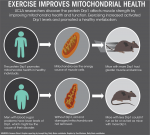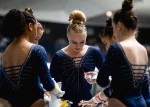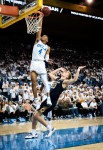The governing board of the University of California met for the first two days of its January meeting at UC San Francisco on Tuesday and Wednesday. Regents discussed changes to the systemwide Title IX plan, improving conditions for student athletes and raising tuition for graduate professional degree programs.
Special Committee on Basic Needs
-
On Tuesday, Student Regent Devon Graves said the goal of the committee is to produce a report after two years that provides an overview of basic needs at UC campuses and discusses ways in which the campuses and the UC Office of the President are helping to solve these issues.
-
UCOP Associate Vice President of Student Affairs Jerlena Griffin-Desta said all UC campuses had established basic needs committees.
-
Student Regent-designate Hayley Weddle recommended the committee examine the intersection between federal and state policy and basic needs insecurity across the UC, consider what data is needed to properly understand and address food and housing insecurity, and explore long-term funding strategies to support basic needs resources.
Board of Regents
-
During public comments Wednesday, students from advocacy groups across the UC campuses made demands to UCOP, including that it stop the outsourcing of UC jobs and hire full-time career workers, terminate any ties to federal immigration agencies and divest from companies which students said they think are violating Palestinian human rights.
-
Lt. Gov. Eleni Kounalakis and State Superintendent Tony Thurmond introduced themselves to the board, adding that they are working to increase accessibility to public education and address food insecurity and labor issues.
-
UC President Janet Napolitano said California Democratic Gov. Gavin Newsom has released a proposed budget which includes a $240 million increase in ongoing funds to the core education budget, along with a one-time fund of $153 million dollars for things such as maintenance. She added the budget includes increased funding for gun violence research, legal services for undocumented students and increased Cal Grant awards for students who are parents.
-
Robert May, chair of the UC Academic Senate, said negotiations over the UC’s contract with Elsevier, which owns more than 2,500 journals including Cell and The Lancet, have not been settled. The contract ended Dec. 31, and the UC has been negotiating a new contract with Elsevier for the past few months. The UC aims to lower subscription costs and make all of its research available for free to the public. The Academic Senate is committed to its open-access policy, May added.
Compliance and Audit Committee
-
Suzanne Taylor, the UCOP interim systemwide Title IX coordinator, gave a six-month update on UCOP’s implementation of recommendations from the California state audit of sexual harassment cases. Taylor said the audit recommendation focused on key areas such as ensuring timeliness of investigations and discipline, making sure that policies align with law and promoting consistency in training Title IX. Taylor added the UC president accepted all audit recommendations.
-
Taylor said the audit remediation plan does not address sexual harassment prevention. Taylor added changes to data collection methods based on the auditors’ recommendations will increase transparency about the Title IX system.
-
Taylor said auditors found that reports filed against faculty and staff during this audit increased compared to earlier audits and attributed it to positive measures at the UC such as increased outreach to students. She added Title IX informs complainants of their rights to go to law enforcement, and the Title IX office has confidential advocates that support complainants in their decisions.
Academic and Student Affairs Committee
-
Michael Brown, UC provost and UCOP executive vice president of Academic Affairs, gave an update on the UC Center Sacramento, a research and public service site in Sacramento operated by UC Davis. He said the goals of the center include increasing student internships in state and assembly offices, increasing student enrollment in the program and making faculty available to both students and Capitol staff. Brown added the center aims to increase student enrollment by 100 students per term in the next decade.
-
Thomas McMorrow, chair of the UCCS advisory board, said UCCS connects faculty with students and Capitol staff more effectively than the UC Washington Center program. The UCCS program hosts biweekly lectures attended by not only students but also the staff of the Capitol and government officials.
-
Griffin-Desta said female athletes graduate at an overall higher rate than male athletes. For example, athletes in NCAA Division I sports have a female graduation rate of 91 percent and a male graduation rate of 79 percent. Christina Rivera, senior associate athletic director and senior woman administrator at UCLA, said this is because male students have more opportunities to pursue careers in sports. Three student athletes at the committee shared their experiences and discussed ways to enhance student-athlete welfare.
-
Hailey Rittershofer, a student athlete at UC Davis, said as one of the first queer athletes at her school, she felt she did not know whether her teammates would accept her, and suggested increasing LGBTQ education among student athletes and supporting systems that allow athletes to explore their identities outside of sports and academics.
-
Evan Singletary, a student athlete at UC Irvine, said he hoped the University would provide more aid for student athletes. He initially lost his athletic scholarship due to injury. He had to work many jobs before earning back the scholarship his second year. However, Singletary said many of his former teammates without scholarships are still working jobs to make ends meet.
-
Brown said UCOP proposed a multiyear plan for charging supplemental tuition for two graduate professional degree programs at UC Berkeley and UC Santa Cruz. The Professional Degree Supplemental Tuition aims to offset reductions in state support for professional schools, according to the Regents’ website.
-
Rick Mintrop, the director of Leadership for Educational Equity Program at UC Berkeley, said the program has lacked resources in the past, and must increase tuition in order to remain sustainable. LEEP is a professional program for people with backgrounds in leading education organizations. LEEP students graduate with a doctorate of education.
-
Regent Eloy Ortiz Oakley said he does not want to place more financial burden on LEEP students, who are already working while attending the LEEP program. He added he does not support charging the supplemental tuition. Mintrop insisted the students are middle-class and able to take out loans to finance their tuition.
-
The committee tabled the motion to increase tuition through PDST for LEEP for further discussion in March.
-
Marilyn Walker, professor of computer science at UCSC, proposed a PDST of $20,000 for UCSC’s one-year program in natural language processing, which trains students to be engineers with expertise in NLP. The supplemental tuition revenue would be used to hire an executive director to work on outreach to the industry, and to hire graduate students who would serve as teaching assistants and peer mentors.
-
The committee passed the motion to charge supplemental tuition for UCSC’s NLP PDST program.
Finance and Capital Strategies Committee
-
Dan Russi, UCPath Center executive director, said UCOP is aware of the payroll issues UCPath has caused, and that it has caused hardships for students. He added the majority of errors stemmed from complexities such as multiple payment sources and data errors.
-
Mark Cianca, associate vice president of UCPath Operational Services, said UCPath implemented corrective measures such as notifying campus payroll teams in advance to finalize student pay and finding pay errors before checks are drafted. UCPath also adopted measures to prevent pay issues, such as implementing a team to address urgent pay issues and strengthening student outreach, Cianca said.
-
The UCPath leadership team decided to delay the final deployment from September to December 2019. UC Irvine also shifted its deployment from March to December 2019.






